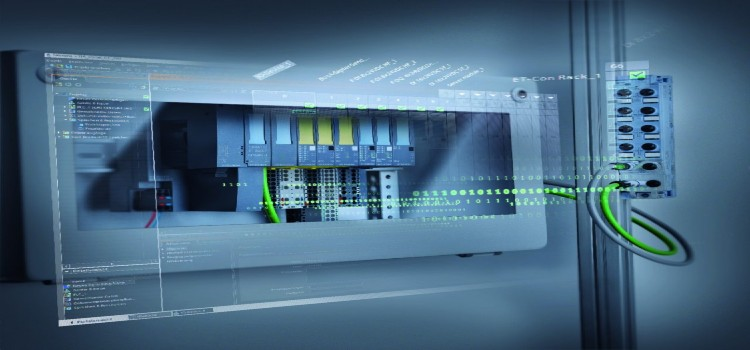
Asia-Pacific Smart Furniture Market by Product Type (Smart Tables & Desks, Smart Stools & Benches, Smart Chairs, and Smart Beds), by End Use (Residential and Commercial), and by Distribution Channel (Online and Offline) – Opportunity Analysis and Industry Forecast, 2024–2030
Industry: ICT & Media | Publish Date: 20-Feb-2024 | No of Pages: 145 | No. of Tables: 99 | No. of Figures: 64 | Format: PDF | Report Code : N/A
Market Overview
The Asia-Pacific Smart Furniture Market size was valued at USD 708.4 million in 2023, and is expected to reach USD 1064.5 million by 2030, with a CAGR of 6.0% from 2024 to 2030. Smart furniture refers to modern furnishings and fixtures designed with embedded technology, sensors, and connectivity features that enhance their functionality, convenience, and usability. These pieces of furniture are equipped with the ability to interact with users and adapt to various needs, often through remote control, via smartphone apps, or voice-activated virtual assistants. Smart furniture improves comfort, efficiency, and user experience in living, working, or recreational spaces by integrating elements such as adjustable settings, built-in charging capabilities, environmental sensors, and connectivity with other smart devices.
The Growing Penetration of IoT Devices in Residential Spaces Drives the Market Growth
With the rapid rise of Internet of Things (IoT) devices in homes, the smart furniture market is booming. In today's connected world, people are eager to embrace technology that simplifies their lives. Smart furniture, equipped with sensors and internet connectivity, seamlessly connects with these IoT devices to create a more personalized and efficient living experience. As more homeowners discover the advantages of this tech-driven design, the smart furniture industry is constantly evolving, paving the way for intelligent and responsive living spaces.
Rising Disposable Income in the Region Further Fuels the Market Growth
The increasing global disposable income per capita is a significant driver behind the growth of the smart furniture market. As individuals have more disposable income, they are increasingly inclined to invest in smart furniture solutions that offer enhanced comfort, convenience, and efficiency in their homes. The expanding affordability and purchasing power fueled by rising incomes are consequently propelling the demand for smart furniture, boosting the market growth.
High Cost and Affordability Issues of Smart Furniture Hinders the Market Growth
The high cost of integrating advanced technology and smart features into furniture represents a significant barrier to entry for many potential buyers, particularly those who are budget-conscious. This cost constraint acts as a limiting factor, hindering the market's expansion and accessibility, especially for affordability-driven segments of the population.
Advancement in Home Automation Technology to Create Future Market Prospects
The rapid advancements in home automation technology are expected to create ample opportunities for the smart furniture industry in the future. This technological progress allows for the integration of smart furniture into the broader smart home ecosystem, making it user-friendly and versatile for consumers of various technical backgrounds. The seamless integration of smart furniture with existing home automation systems, such as voice assistants and smart thermostats, ensures the streamlining of the user experience and enhances the appeal of smart homes.
China Holds the Dominant Market Share in Asia-Pacific Market
The expansion of global per capita disposable income is serving as a major catalyst for the growth of smart furniture market. As individuals enjoy greater financial flexibility, they are increasingly drawn to smart furniture solutions that enhance the comfort, convenience, and efficiency of their living environments. This surge in affordability and purchasing power, fueled by rising incomes, is consequently driving demand for smart furniture and propelling the market forward with significant momentum.
The surge in environmental consciousness propelled the smart furniture market toward a dual commitment to energy efficiency and sustainability. Manufacturers are incorporating energy-efficient features such as LED lighting systems and smart sensors that optimize power consumption based on occupancy, aligning with the global push for reduced energy use. Simultaneously, there is a significant emphasis on the materials used in production, with a growing preference for sustainable options such as recycled or responsibly sourced materials.
Vietnam to Witness Substantial Growth in the Asia-Pacific Market
The growing need for furniture that saves space and serves multiple functions is a key factor driving the popularity of smart furniture. In today's busy urban areas, where living spaces are often limited in size, people are looking for smart solutions that make the most of their available space. This trend reflects the changing lifestyle of city dwellers who prefer compact and versatile furniture. Smart furniture is designed to meet this demand, offering features such as hidden storage, foldable designs, and the ability to adapt to different uses. This furniture is essential for making the most out of small living spaces.
The increasing prevalence of home automation is a significant driving force behind the surge in demand for smart furniture. As technology advances, consumers seek seamless integration between their furniture and home automation systems. This trend enables users to control and monitor various aspects of their living spaces remotely, fostering a more interconnected and technologically advanced home environment.
Competitive Landscape
Several market players operating in the Asia-Pacific smart furniture market include Inter IKEA Systems BV, Herman Miller, Inc., Steelcase, Inc., Sobro, StoreBound LLC, Seebo Interactive Ltd., Milano Smart Living, Modoola Limited, Hi-Interiors SRL, and Sleep Number Corporation.
Asia-Pacific Smart Furniture Key Market Segments
By Product Type
-
Smart Tables & Desks
-
Smart Stools & Benches
-
Smart Chairs
-
Smart Beds
By End Use
-
Residential
-
Commercial
By Distribution Channel
-
Online
-
Offline
By Geography
-
Asia-Pacific
-
China
-
Japan
-
India
-
Australia
-
South Korea
-
Taiwan
-
Singapore
-
Vietnam
-
Rest of Asia-Pacific
-
REPORT SCOPE AND SEGMENTATION:
|
Parameters |
Details |
|
Market Size in 2023 |
USD 708.4 Million |
|
Revenue Forecast in 2030 |
USD 1064.5 Million |
|
Growth Rate |
CAGR of 6.0% from 2024 to 2030 |
|
Analysis Period |
2023–2030 |
|
Base Year Considered |
2023 |
|
Forecast Period |
2024–2030 |
|
Market Size Estimation |
Million (USD) |
|
Growth Factors |
Growing penetration of IoT devices in residential spaces drives the market growth. Rising disposable income in the region further fuels the market growth. |
|
Countries Covered |
8 |
|
Companies Profiled |
10 |
|
Market Share |
Available for 10 companies |
|
Customization Scope |
Free customization (equivalent up to 80 working hours of analysts) after purchase. Addition or alteration to country, regional, and segment scope. |
|
Pricing and Purchase Options |
Avail customized purchase options to meet your exact research needs. |
KEY PLAYERS
-
Inter IKEA Systems BV
-
Herman Miller, Inc.
-
Steelcase, Inc.
-
Sobro
-
StoreBound LLC
-
Seebo Interactive Ltd.
-
Milano Smart Living
-
Modoola Limited
-
Hi-Interiors SRL
-
Sleep Number Corporation




 Speak to Our Analyst
Speak to Our Analyst


































